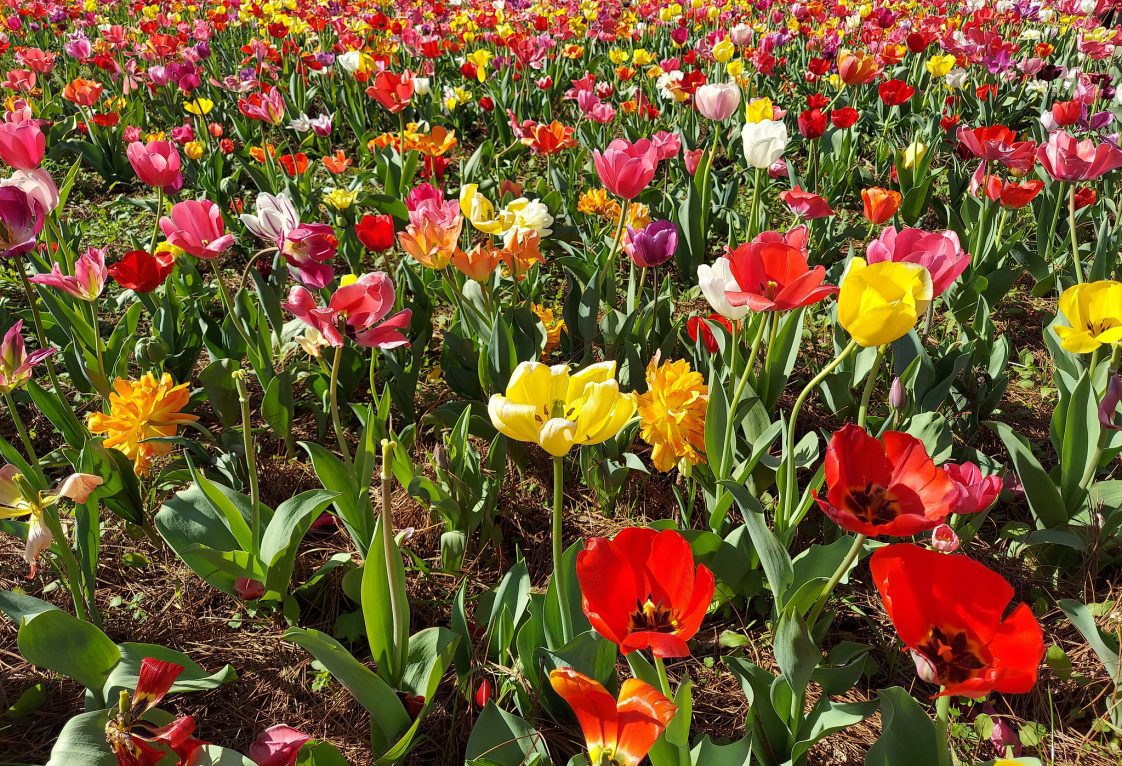Landscaping

Cut flowers are a beautiful addition to a garden of any size. There’s nothing like enjoying the sights and scents of a fresh bouquet of flowers from your backyard. Cut flowers can be used to make a variety of bouquets and floral designs. Also, there are many benefits to growing flowers, including attracting beneficial insects and deterring some pests. Cut flowers are grown similar to traditional garden vegetables, and can be grown in a variety of spaces including garden plots, raised beds, and containers.
Cut Flower Varieties
One of the key steps to growing cut flowers is choosing the right varieties. Some types are easier to grow than others are and require no extra maintenance. However, for other types, there may be a few extra steps. Also, you need to choose varieties that will grow well in your area and will provide you with a good supply of flowers throughout the growing season. Because of this, it is a good idea to plant a few different types of flowers that have different bloom times so you can enjoy fresh flowers throughout the growing season.
If you are planning to plant cut flowers within your vegetable garden, it is a good idea to plant annual varieties that will die back by the end of the season. However, if you are planting a garden bed specifically for cut flowers, incorporating perennial flowers, shrubs, or foliage can serve as a backbone for the space and provide filler flowers and foliage. Annual flowers can then be grown throughout the spring, summer, and fall to provide a variety of texture and colors for your bouquets. The following are some suggestions for cut flower varieties:
Perennial Plants
Many perennial plants can be grown for cut flowers. While they may not be a part of your traditional bouquet, they provide an excellent array of flowers year after year. Roses, Shasta daisies, lavender, salvia, and hydrangeas are all good perennial plants for your landscaping and gardens that can provide cut flowers.
Foliage
Think outside the box when it comes to growing foliage for your bouquets, and consider using what green material that you may already have from bushes or trees in your yard. Small stems taken from bushes or trees can be used in arrangements. Small perennials–like dusty miller–provide unique texture to bouquets. Even the foliage from herbs–like basil or dill–works well in small arrangements and are easy to grow.
Annual Plants
Fall
Planting bulbs–like tulips, narcissus, or daffodils–in the fall is an easy way to provide flowers to cut and use for bouquets in the spring. There are a wide variety of tulips that can be grown for different colors and textures. Ranunculus and anemone corms and bulbs are also planted in the fall in the Alabama climate, but should be kept covered to keep from freezing temperatures.
Spring
You can enjoy blooms from tulips, daffodils, and narcissus throughout the spring, bringing color to your spring table. Cut anemones and ranunculus flowers regularly to encourage continual blooms until temperature becomes too warm. Snapdragons should be planted in early spring for late-spring blooms since they do not tolerate heat well. Dahlia tubers are planted in the spring for summer blooms. Wildflower seed mixes can be planted in the spring as well and are easy to grow. They bring unique colors and textures that will also attract butterflies.
Summer
Zinnias are easy to grow and come in a wide range of colors, flower types, and heights. It is important to harvest zinnias regularly to promote further blooming. Plant sunflowers in intervals to enjoy blooms for a longer period of time throughout the summer and fall. Consider growing a few different varieties of sunflowers for different sizes and vase life. Cosmos are easy to grow from seed and provide beautiful whimsical blooms for summer bouquets.

